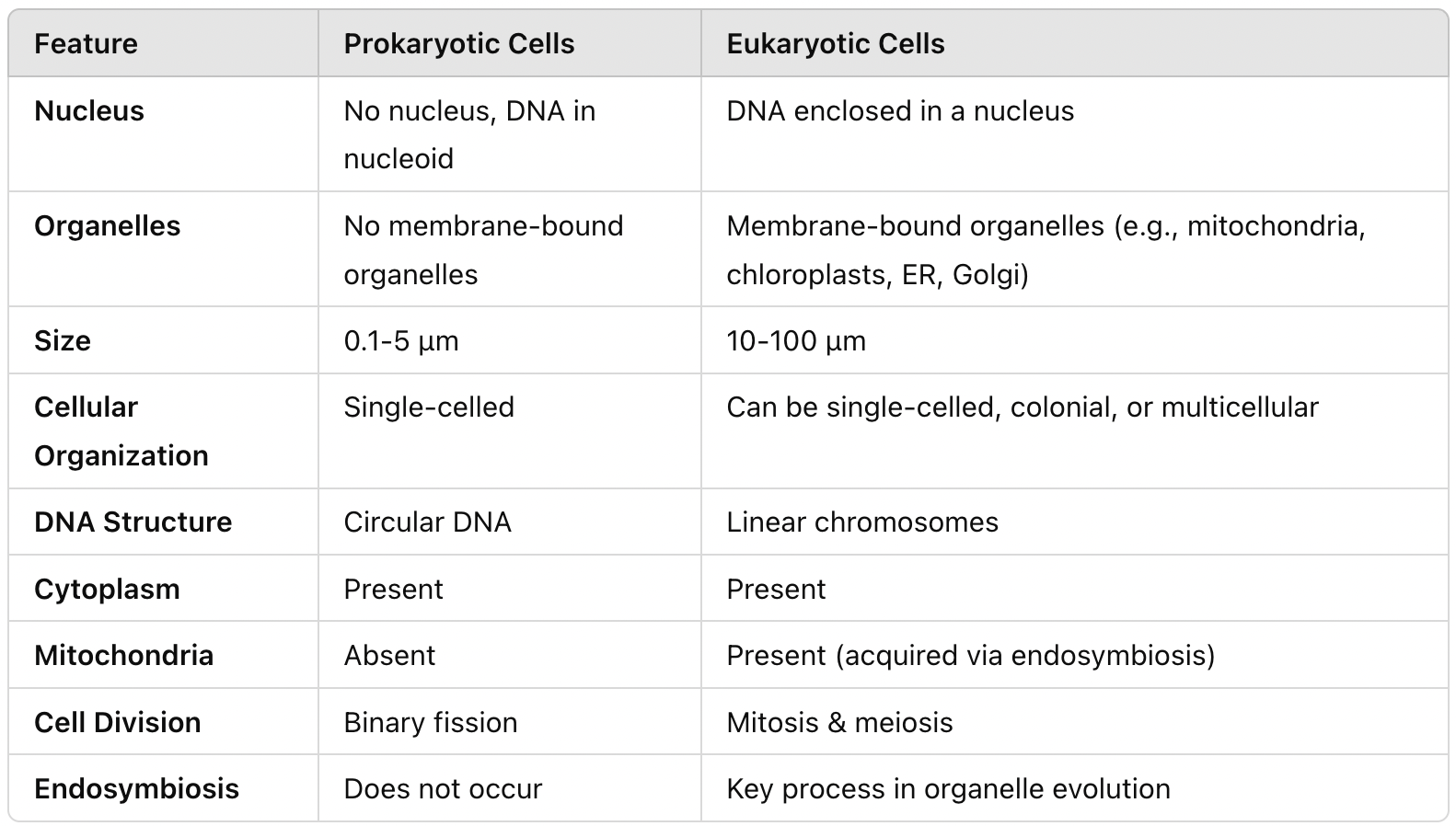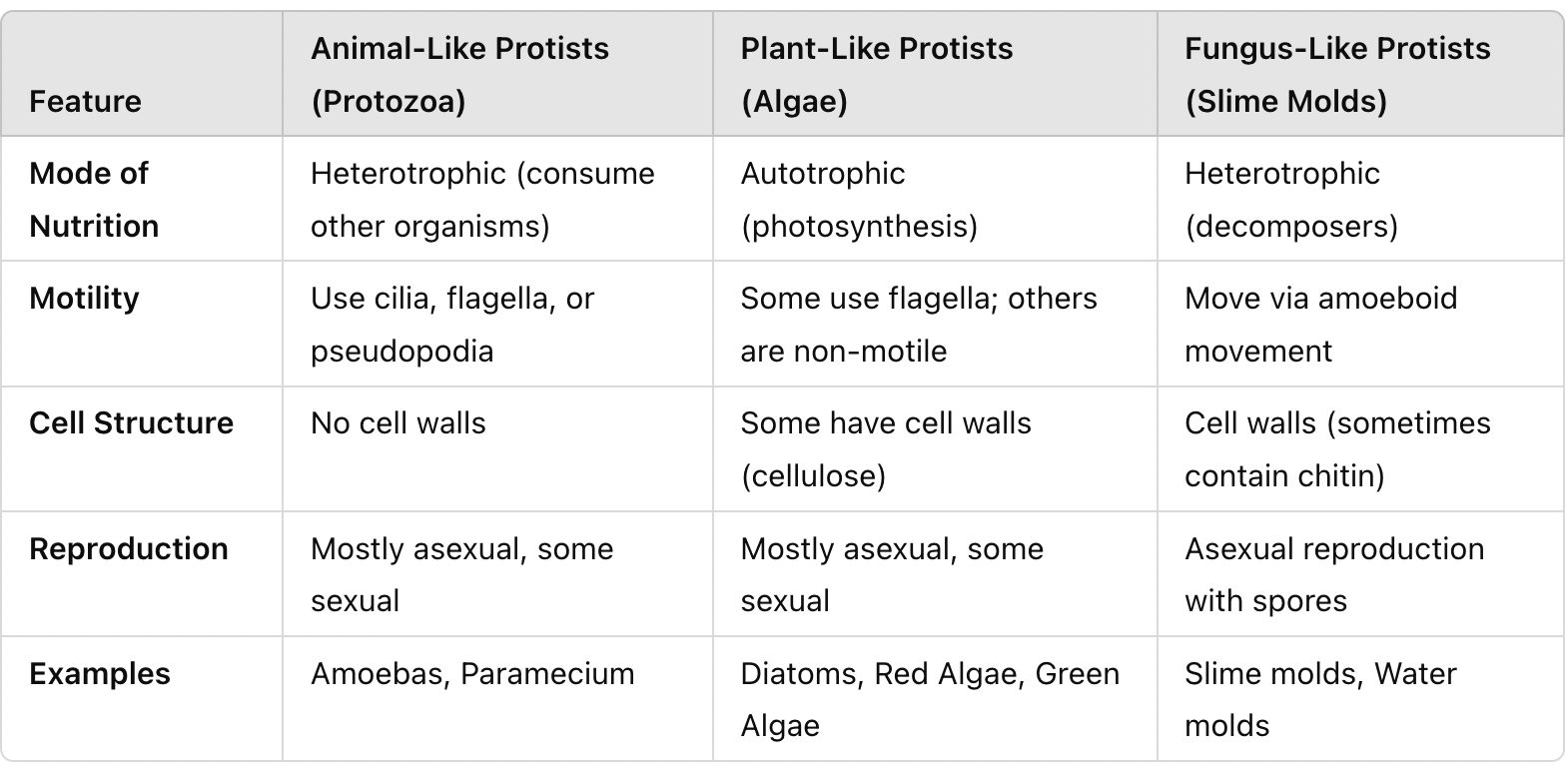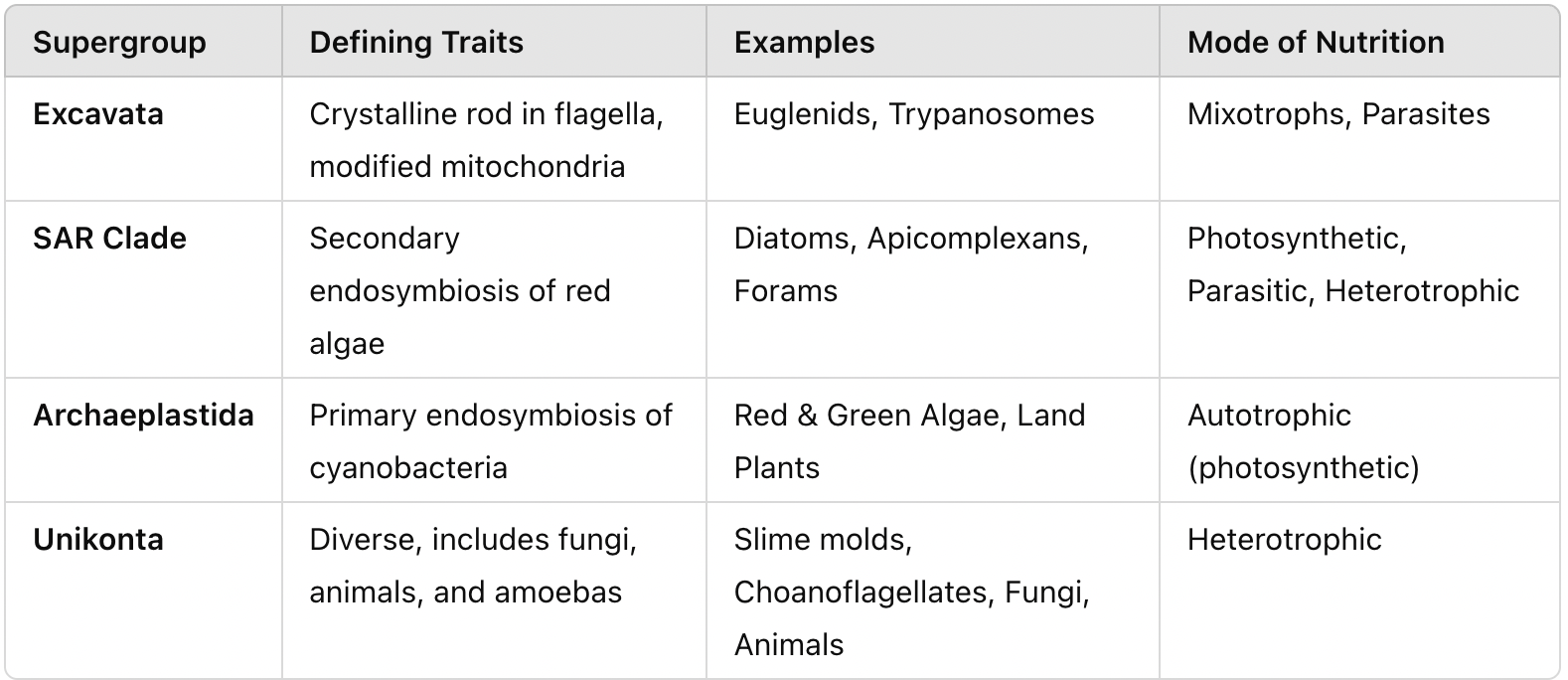Topic 3- Eukaryotes
compare and contrast eukaryotic cell structures

sequence eukaryotic evolution
Formation of First Eukaryotic Cell
Ancestral prokaryotic cell evolved into a eukaryotic cell through endosymbiosis.
Engulfed an aerobic alpha-proteobacterium, which became the mitochondrion.
Primary Endosymbiosis (Origin of Mitochondria and Chloroplasts)
Mitochondria evolved from the engulfment of an aerobic alpha-proteobacterium.
Chloroplasts evolved from a cyanobacterium engulfed by a eukaryotic ancestor of plants.
Diversification of Eukaryotic Supergroups
Four major supergroups emerged:
Excavata
SAR Clade
Archaeplastida (gave rise to plants)
Unikonta (gave rise to fungi & animals)
Secondary Endosymbiosis
Some eukaryotic cells engulfed primary endosymbionts, leading to complex plastid evolution (e.g., red and green algae).
Rise of Multicellularity
Multicellular organisms (e.g., plants, fungi, animals) evolved from unicellular eukaryotic ancestors.
compare and contrast characteristics of protists

compare and contrast eukaryotic supergroups

I. Introduction to Eukaryotes
A) Eukaryotic Cell Structures
The root of the Eukarya domain is not well understood.
The eukaryotic phylogenetic tree is a polytomy, meaning its branching order is unresolved.
The ancestral characteristics of all eukaryotes (from Lecture 5) include:
DNA enclosed in a nucleus.
Membrane-bound organelles (such as mitochondria, chloroplasts, ER, Golgi apparatus).
Cytoplasm.
Cell sizes ranging from 10-100 micrometers.
Exist as single-celled organisms, colonies, or multicellular organisms.
Endosymbiosis played a crucial role in the origin of mitochondria through the engulfment of prokaryotic micro-bacteria.
B) Endosymbiosis
All eukaryotes have endosymbiotic relationships (Lecture Topic 6).
Endosymbiosis: A symbiotic relationship where one cell engulfs another, and they continue living together.
Serial endosymbiosis: Eukaryotic cells evolved through a series of endosymbiotic events.
Primary vs. Secondary Endosymbiosis:
Primary endosymbiosis: A free-living bacterium is engulfed by a larger host cell, leading to the formation of an organelle (e.g., mitochondria, chloroplasts).
Mitochondria originated from an aerobic alpha proteobacterium engulfed by the ancestor of all eukaryotes.
Chloroplasts originated from a photosynthetic cyanobacterium engulfed by the ancestor of plants.
Secondary endosymbiosis: A eukaryotic cell that has already undergone primary endosymbiosis is engulfed by another eukaryotic cell.
Plastids, such as chloroplasts, originate through secondary endosymbiosis.
The Endosymbiotic Theory states that mitochondria and chloroplasts evolved from free-living prokaryotic organisms that were engulfed by ancestral eukaryotic cells.
D) Protists
The term "protist" means “the very first” and refers to early eukaryotic organisms.
Protists arose through endosymbiosis and are unicellular or simple multicellular organisms.
The traditional classification of protists excludes plants, fungi, and animals.
II. Eukaryotic Supergroups
A) Archaeplastida
Defining Trait: All members share the ancestral trait of primary endosymbiosis, where a eukaryotic ancestor engulfed a photosynthetic cyanobacterium, leading to the evolution of chloroplasts.
Major Groups:
Red Algae: Contains the red pigment phycoerythrin, allowing it to absorb different wavelengths of light.
Green Algae: Closely related to land plants.
Chlorophytes: A diverse group of green algae.
Charophytes: The closest relatives to land plants.
All members utilize chlorophyll a and b for photosynthesis.
B) SAR Clade
Defining Trait: Genetic characteristics and secondary endosymbiosis of red algae.
Monophyletic group consisting of:
Stramenopiles:
Derived Traits: Possess two flagella—one long and hairy, the other short and smooth.
Many are photosynthetic algae.
Example: Diatoms (unicellular algae with silica cell walls).
Alveolates:
Derived Trait: Alveoli—flattened membrane-bound sacs beneath the plasma membrane.
Example: Apicomplexans, a parasitic group.
Apical complex helps penetrate host cells (e.g., Plasmodium, which causes malaria).
Rhizarians:
Derived Trait: Skeletal structures made of calcium carbonate or silica.
Example: Foraminiferans ("forams"), which have porous shells (tests) made of calcium carbonate.
C) Amoebozoa
Defining Trait: Amoeboid movement with a blob-like shape.
Includes slime molds and entamoebas.
D) Opisthokonta
Defining Trait: Genetic characteristics shared among fungi and animals.
Major Groups:
Nucleariids: Sister group to fungi.
Choanoflagellates: Sister group to animals and resemble collar cells in sponges.
E) Discoba
Defining Trait: Crystalline rod structure in flagella.
Also exhibits secondary endosymbiosis of green algae.
Examples:
Euglenids: Photosynthetic, mixotrophic organisms.
Trypanosomes: Parasitic organisms.
Mixotrophs: Can switch between phototrophy and heterotrophy (photo-chemoautotrophs).